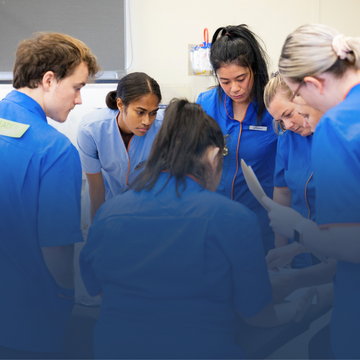Your feet carry you through the most important work of all – caring for others. But are your shoes supporting you like they should?
Why Footwear Matters in Healthcare
For healthcare professionals, uniforms aren't just about appearance – they're about performance, safety, and wellbeing. And while scrubs often take the spotlight, footwear is just as vital. Nurses, doctors, and allied health workers can walk over 15,000 steps per shift, standing for hours, and responding rapidly to patient needs.
Wearing worn-out shoes impacts not just your comfort, but your safety and hygiene. That's why regularly replacing your work shoes is essential – not optional.
When Should You Replace Healthcare Shoes?
A good rule of thumb: replace your footwear every 6-12 months, depending on factors such as:
- Workload: More hours on your feet = faster wear and tear
- Foot biomechanics: Flat feet, high arches, or gait issues increase pressure points
- Environment: Wet floors, chemical exposure, and constant movement accelerate breakdown
- Shoe quality: Even premium shoes need assessment every few months
If you work long shifts or high-pressure roles, your shoes may need replacing closer to the 6-month mark.
The Risks of Worn-Out Shoes
Outdated or damaged shoes can do more harm than good. Key concerns include:
- Foot Pain and Fatigue – Flat or unsupportive soles increase pressure and strain
- Plantar Fasciitis – A lack of arch support can inflame foot ligaments, causing chronic pain
- Joint & Back Pain – Poor shock absorption affects alignment from ankles to spine
- Slip Hazards – Tread wears down over time, increasing the risk of falls
- Hygiene Issues – Old shoes trap moisture and bacteria, compromising infection control
In fact, 32% of NHS workplace injuries in 2022-23 were due to slips, trips, and falls – a stark reminder of how crucial good footwear really is.
Maintaining Hygiene and Safety
Healthcare environments expose shoes to:
- Bodily fluids
- Harsh cleaning agents
- Bacterial hotspots
While regular cleaning helps, there comes a point when a shoe's materials begin to degrade – reducing their waterproofing, anti-microbial properties, and structural support. Replacing them ensures you're meeting hygiene standards and minimising health risks.
Why Investing in the Right Footwear Matters
At Arrow, we recommend investing in purpose-designed footwear like the Toffeln range, made specifically for healthcare environments. Features include:
- Slip-resistant soles for better grip in wet areas
- Ergonomic design that reduces fatigue and supports alignment
- Shock-absorbing midsoles to cushion impact during long shifts
- Hygienic, easy-to-clean materials that meet infection control protocols
Choosing the right shoes, and knowing when to replace them, is one of the easiest way to improve comfort, protect your health, and avoid injury.
Prioritise Foot Health, Boost Performance
Your uniform does more than signal professionalism – it's your first line of defence in a physically demanding role. And that includes your shoes. Regular replacements aren't just about comfort – they're a proactive step toward:
- Improved posture and joint health
- Reduced risk of injury
- Greater daily comfort
- Better hygiene standards
Ask yourself: When did I last replace my work shoes? If it's been over six months, it may be time for an upgrade.
Step Into Safety & Comfort
Explore Arrow's full range of healthcare footwear solutions, including Toffeln – designed for those who stand all day to support others.
Shop the collection now or get in touch to learn more about bulk discounts for your healthcare team.




